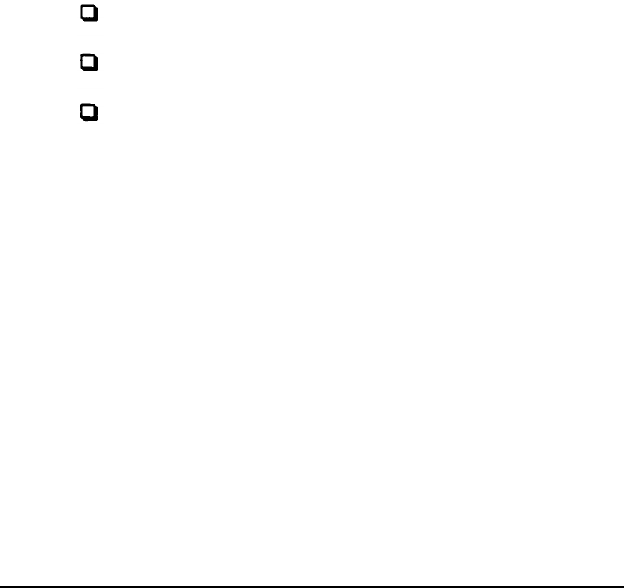
Note
RECOVER renames all files on the diskette, so use it
only after you have copied as many files as possible with
the MS-DOS COPY command.
6.
If you are not able to copy all the files from the defective
diskette, copy as many as you can and then use the
MS-DOS program RECOVER. This program recovers all
the data that it can read on the diskette. It is specifically
designed to work on disks that may be defective. Consult
your MS-DOS Reference Manual for instructions on using
RECOVER.
If you see no error messages but there is something wrong
with the data in a file, MS-DOS or an application program
may have updated the storage information on the diskette
incorrectly. This is probably the case if you have one of
these problems:
Part of a file is missing
A file includes parts of other files
An expected output file is missing.
To make the necessary repairs, use the MS-DOS program
CHKDSK (described in your MS-DOS Reference Manual).
Note
It is best to make a backup copy of the entire diskette
before making changes with CHKDSK.
CHKDSK examines the diskette and if it finds errors, you
see the following message:
Errors found,
F
parameter not specified
Corrections will not be written to disk
Troubleshooting 5-7


















